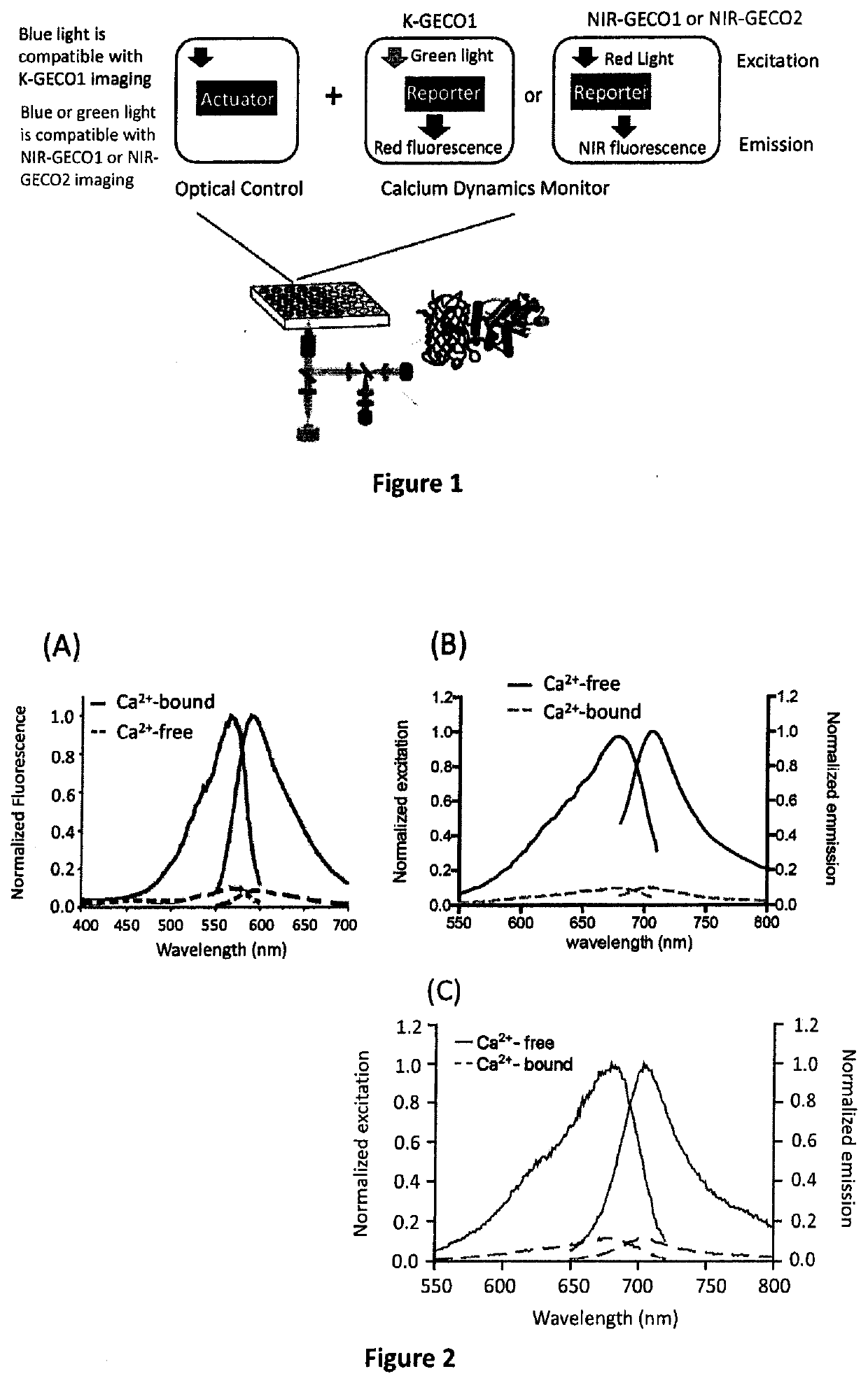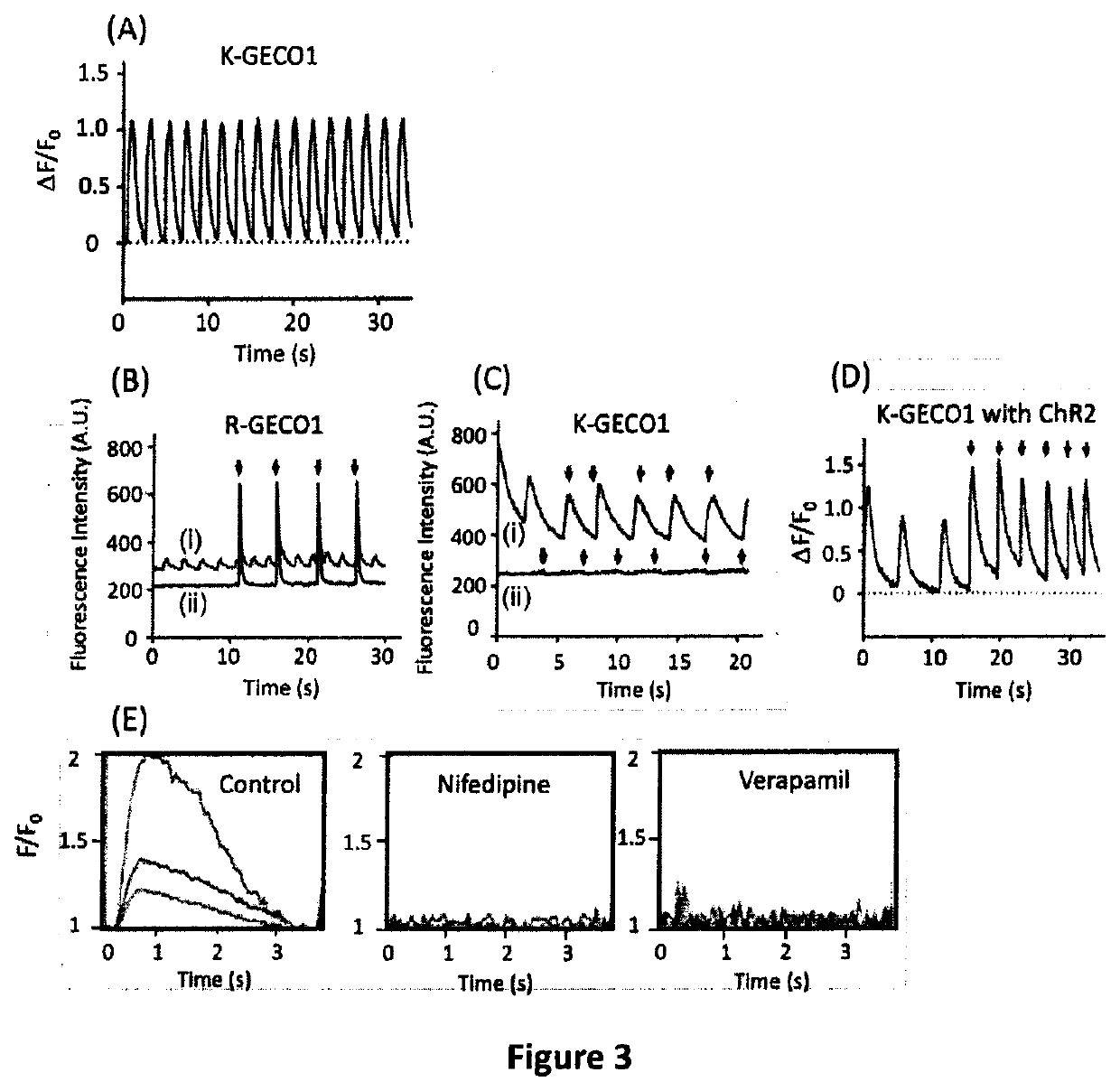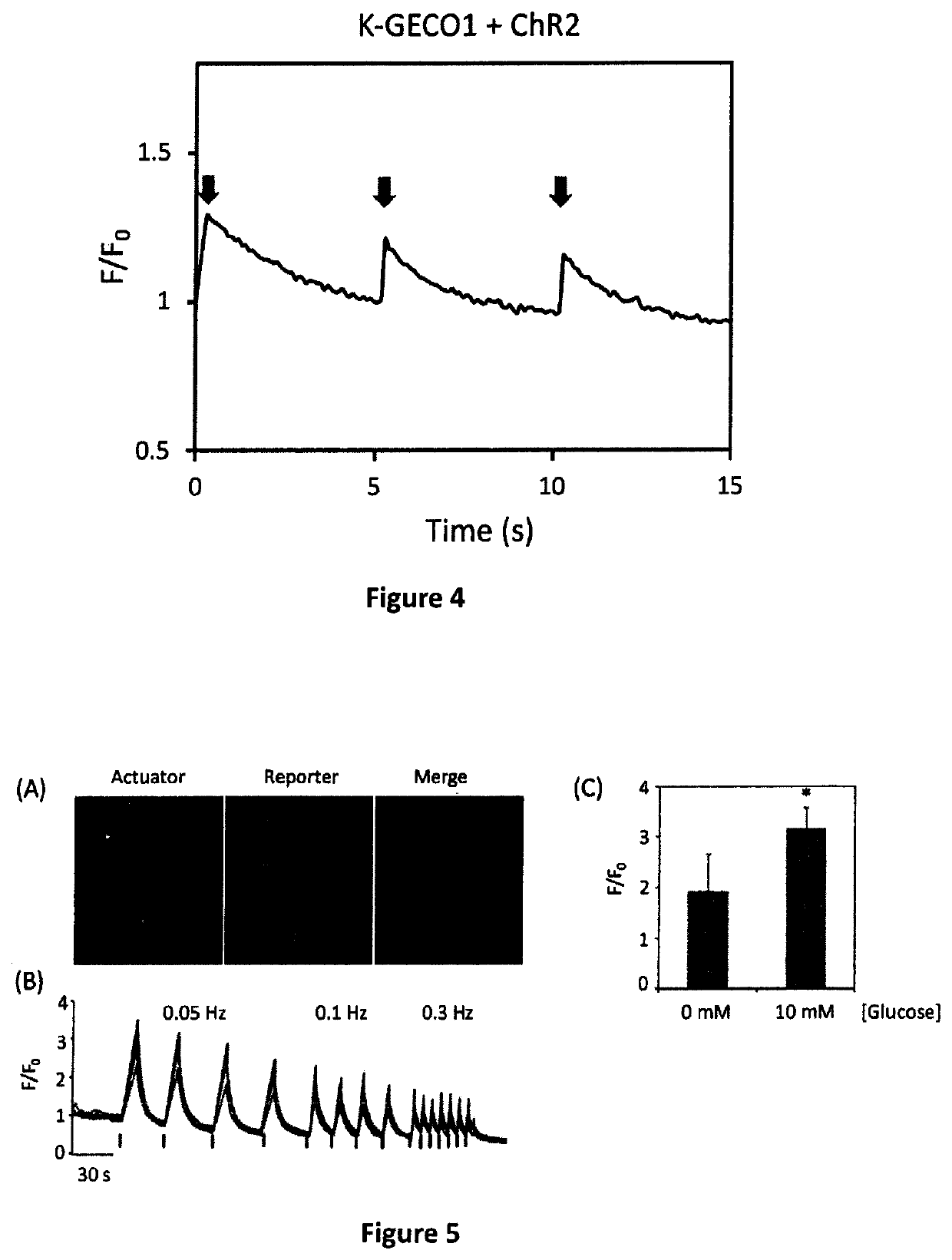Genetically encoded fluorescent indicators under optogenetic control and uses thereof
a fluorescent indicator and optogenetic control technology, applied in the field of artifact-free alloptical characterization of cellular physiology, can solve the problems of limiting the use of red gecis in conjunction with blue-light activated optogenetic actuators, reducing the sensitivity of rcamp variants, and complicated photophysics and lysosomal accumulation of r-geco variants
- Summary
- Abstract
- Description
- Claims
- Application Information
AI Technical Summary
Benefits of technology
Problems solved by technology
Method used
Image
Examples
example 1
for Mammalian Cell Imaging and Virus Production
[0060]ChR2-EYFP linked by a 2A peptide to K-GECO1 was amplified and subcloned into the pshuttle backbone for commercial adenoviral production (Vector Biolabs, Malvern, Pa., US). All sequences are provided in Example 7.
example 2
Characterization
[0061]To purify K-GECO variants for in vitro characterization, the pBAD / His B plasmid encoding the variant of interest was used to transform electrocompetent E. coli DH10B cells and then plated on LB-agar plate with ampicillin (400 μg / mL). Single colonies were picked and inoculated into 5 mL LB medium supplemented with 100 g / mL ampicillin. Bacterial subcultures were incubated overnight at 37° C. Then, 5 mL of bacterial subculture was added into 500 mL of LB medium with 100 μg / mL of ampicillin. The cultures were incubated at 37° C. to an OD of 0.6. Following induction with L-arabinose to a final concentration of 0.02% (wt / vol), the cultures were then incubated at 20° C. overnight. Bacteria were harvested by centrifugation at 4000 g for 10 min, resuspended in 30 mM Tris-HCl buffer (pH 7.4), lysed using a French press, and then clarified by centrifugation at 13,000 g for 30 mins. Proteins were purified from the cell-free extract by Ni-NTA affinity chromatography (MCLAB)...
example 3a
re Conditions of HL-1 Cell Line
[0067]To culture the HL-1 cell line, flasks were pre-coated with gelatin / fibronectin at 37° C. overnight. Cells were cultured in supplemented Claycomb Medium (Claycomb Medium with 10% fetal bovine serum (Sigma Aldrich 12103C (Batch 8A0177)), 1 U / ml penicillin / streptomycin, 0.1 mM norepinephrine and 2 mM L-glutamine) and split 1:3 when they reached confluency.
PUM
| Property | Measurement | Unit |
|---|---|---|
| excitation wavelength | aaaaa | aaaaa |
| emission wavelengths | aaaaa | aaaaa |
| activation wavelength | aaaaa | aaaaa |
Abstract
Description
Claims
Application Information
 Login to View More
Login to View More - R&D
- Intellectual Property
- Life Sciences
- Materials
- Tech Scout
- Unparalleled Data Quality
- Higher Quality Content
- 60% Fewer Hallucinations
Browse by: Latest US Patents, China's latest patents, Technical Efficacy Thesaurus, Application Domain, Technology Topic, Popular Technical Reports.
© 2025 PatSnap. All rights reserved.Legal|Privacy policy|Modern Slavery Act Transparency Statement|Sitemap|About US| Contact US: help@patsnap.com



